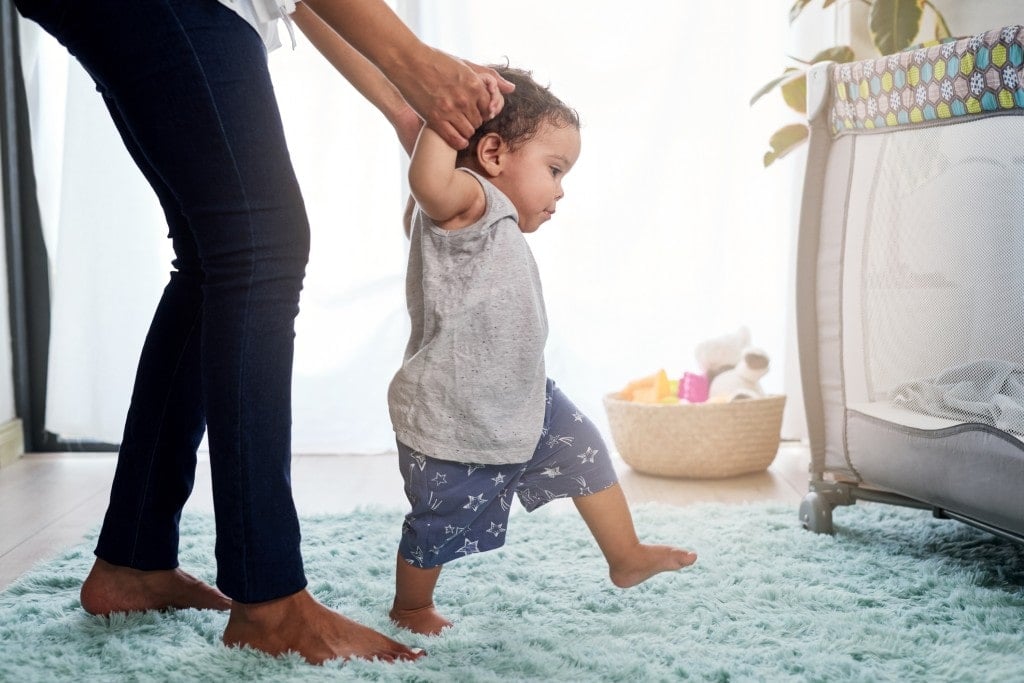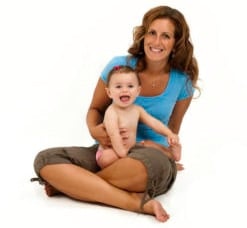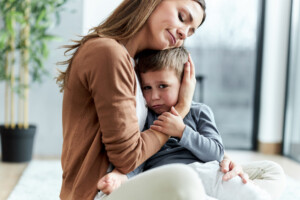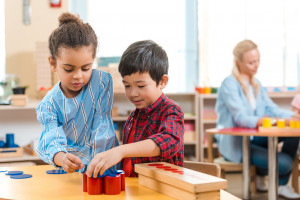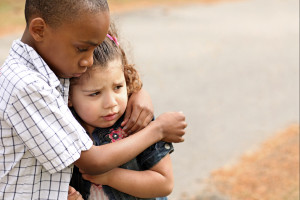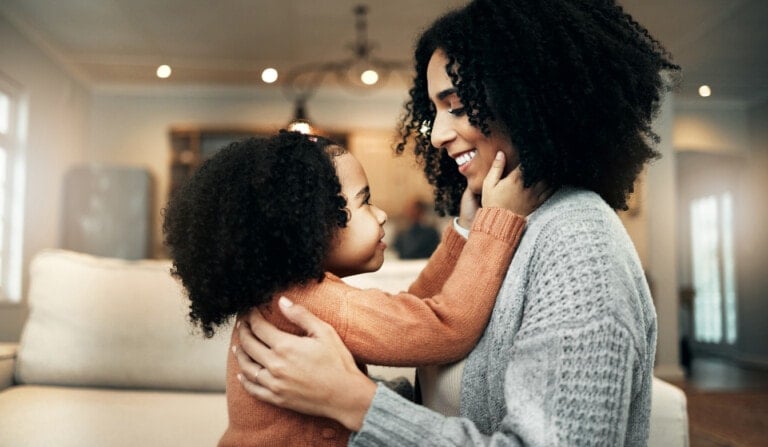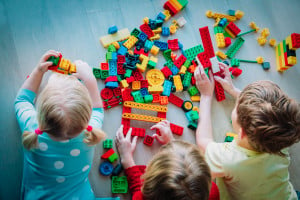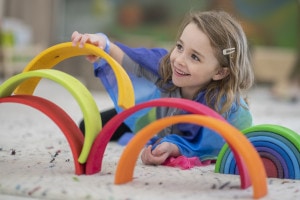New moms often wonder, “When do babies start walking?” The process of learning to walk happens long before that exciting first step! Did you know that your baby is laying down the groundwork to start walking within the first several weeks after being born? Babies develop from their head to their toes and from their trunk to their extremities. This is the direction in which their neurological system is forming and developing.
It starts with trunk and neck strength.
You will notice that your baby gains head control before trunk control and can roll left and right. Your baby will use their trunk muscles before they can show any dexterity in their hands or control over their feet. These earlier trunk and neck strength skills provide the foundation for higher-level skills. This includes the coordinated use of hands and walking. Without stability in the baby’s core muscles, hips, and shoulders, they will not have strength and stability in the tiny muscles of the arms, legs, feet, and hands. It is a progressive process that builds on those earlier floor time activities, tummy time, pushing up on hands to lift their head and look around, and building stability.
Balance is key.
Another important component of walking is balance. Babies are born with no sense of balance at all. But it develops significantly over the first year. There are many things parents and caregivers can do to help babies develop a sense of balance.
Balance centers are housed in the inner ear. You stimulate their developing sense of balance by merely talking, reading, and singing to your baby. Like most skills, babies learn balance through practice and repetition. Simply by allowing babies a variety of positions throughout the day, you encourage the balance centers of the inner ear and brain to activate.
As babies process their world from vertical positions, horizontal positions, and through lots of different movements, their sense of balance begins to form. Think about using baby carriers that allow your baby to be vertical on your chest, so they have to hold their head upright against gravity. This helps to build neck strength and processing balance and equilibrium.
Trust the crawling process.
Each milestone builds on the previous milestone. Parents must view “learning to walk” as a process that begins at birth with tummy time, core strengthening, balance training, and spending ample time in each developmental milestone.
Crawling is a significant milestone and precursor to walking. While crawling, babies begin to develop the reciprocal motion of moving one side of the body and then the other in a coordinated manner. This requires both sides of the brain to work together synchronously. The left side of the brain controls the right side of the body, and the right side of the brain controls the left side of the body. The two sides of the brain are connected by a very fibrous portion of the brain called the corpus callosum. The corpus callosum is strengthened by using both sides of the body together, such as by crawling. Crawling also helps strengthen the core and hip muscles for future walking.
Crawling helps to develop balance, coordination, and agility. Some babies skip the crawling milestone entirely, especially if they do not spend much time on the floor in tummy time. It is important that babies do not skip any developmental milestones since they all build on previous ones. But this is especially true for crawling. Encourage floor time and crawling as much as possible. It is such a critical piece in early walking.
Let them pull up on their own.
Once babies become comfortable and strong crawlers and can change positions during crawling (moving from crawling to sitting and back to crawling), they will usually start pulling themselves up to the standing position on furniture or their crib. This tells us that the tiny muscles of their feet, knees, and hips are naturally ready to bear their weight. Now it is time to allow the baby to stand in an exersaucer or jumper.
It is not recommended to use these items before the baby pulls them up to stand on their own. Their musculature is simply not ready. Using an exersaucer or jumper once they’ve pulled up on their own will continue to help build lower body strength and a sense of balance. Babies should always be supervised in these devices. They should not spend more than twenty minutes at a time in these devices. And they should be able to bear weight on flat feet, not just their toes.
The first steps come in fits and spurts.
Babies typically begin to attempt that first step when they become good at crawling. So don’t be surprised if your baby can take a step or two but prefers crawling because they can get much faster from one place to another. It is okay to continue encouraging crawling during this transition stage because it provides a great foundation of core strength. Think of crawling like planking for adults. The start time for walking varies tremendously from one child to another. One child may start walking at nine months, and another child may not start walking until they are sixteen months old. Both are within the realm of typical development.
If you have questions or concerns about your baby’s timeframe to start walking, talk to your baby’s healthcare provider. They will probably tell you that they are on track as long as your baby makes some physical gains every few weeks. Try not to compare your baby to other babies. Early child development is highly variable and will look very different from one child to another.
Tips for Helping Your Baby Start Walking
Here are a few tips for when your baby does start to take those exciting first steps:
- Babies should learn to walk bare feet. Try to resist the urge to put those adorable little shoes on your child. They rely on splaying their toes on the floor for balance.
- Remember to childproof your home. Walk around on your knees at your baby’s new level and look for hazards such as blind cords, uncovered outlets, staircases, and drawers that they can open. Also, ensure that any furniture your baby might pull themselves up on is securely anchored to the wall.
- Avoid walkers. Walkers are very dangerous and have even been discontinued in Canada.1 They allow babies to move very quickly. They also give babies access to higher surfaces, such as hot burners on the stove, heavy items to pull from a counter, and window cords that are a strangulation hazard. Walkers can also cause strain to your baby’s tiny feet, knees, and hips if they are not developmentally prepared to bear their own weight.
That first step is one of the most exciting moments of parenting! Just remember the timing when babies start walking is different for each child. They start the journey to that first step as soon as they are born!

